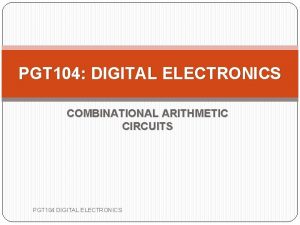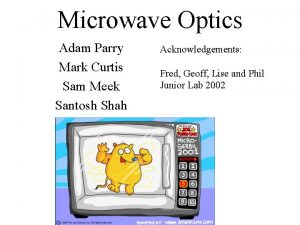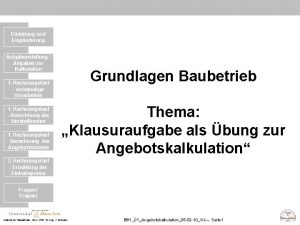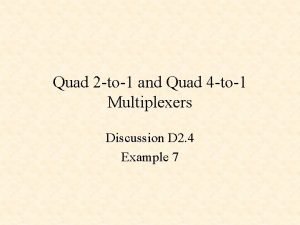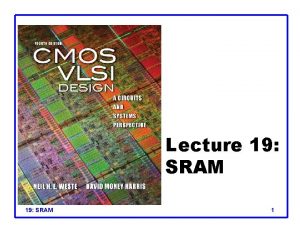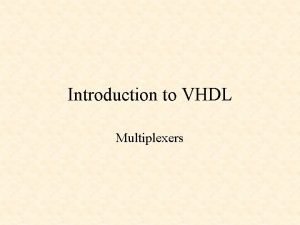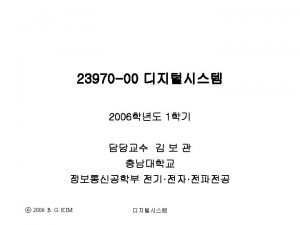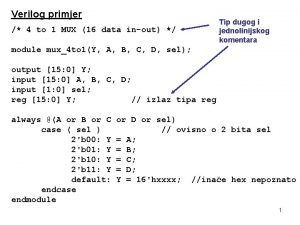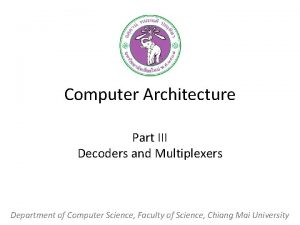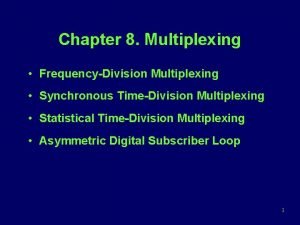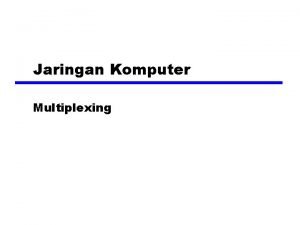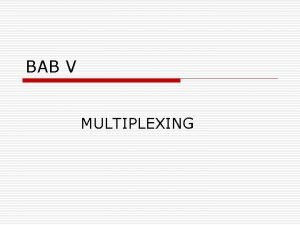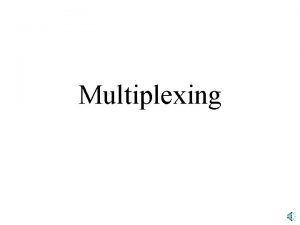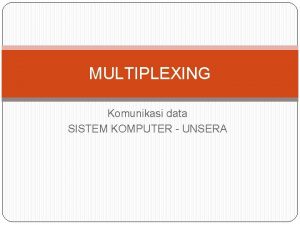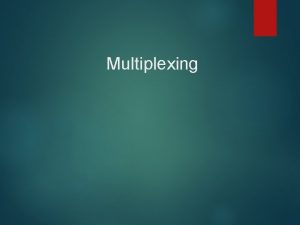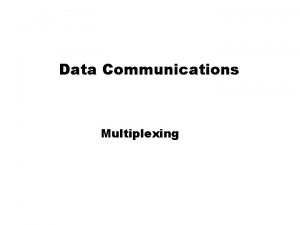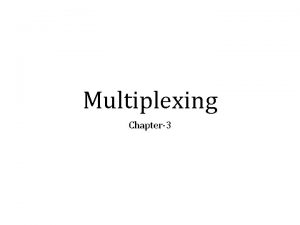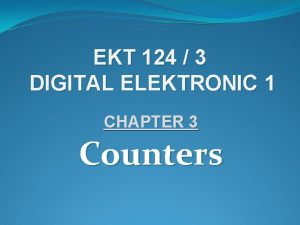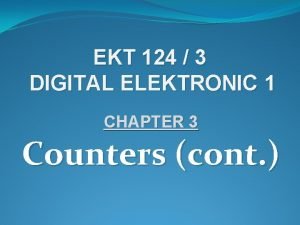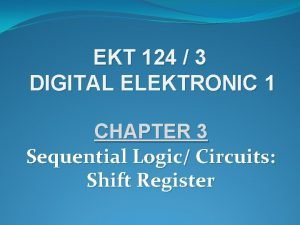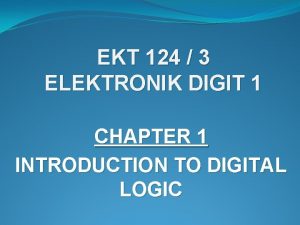EKT 124 MUX AND DEMUX 1 Multiplexing and


















- Slides: 18

EKT 124 MUX AND DEMUX 1

Multiplexing and demultiplexing are used when data from several sources are to be transmitted over one line to a distant location and redistributed to several destinations. The data selection function (Taken from Floyd 11 th ed pg. 30 Figure 1 -24) Floyd, Digital © 2009 Pearson Education, Upper Saddle River, NJ

Multiplexer (MUX) – Data Selector v A multiplexers (MUX) is a device that allows digital information from several sources to be routed onto a single line for transmission over that line to a common destination. v The basic multiplexers has several data input lines and a single output line. It also has data- select inputs, which permit digital data on any one of the inputs to be switched to the output line 3

Functional Diagram of a MUX 4

Functional Diagram of a MUX A multiplexer has N control inputs 2 N data inputs 1 output (Z) 2 N N A multiplexer routes (or connects) the selected data input to the output. The value of the control inputs determines the data input that is selected. 5

MUX – Function Table and Boolean Expression MSB A B Z 0 0 I 0 0 1 I 1 1 0 I 2 1 1 I 3 LSB Z = A′. B'. I 0 + A'. B. I 1 + A. B'. I 2 + A. B. I 3 6

MUX – Function Table and Boolean Expression MSB A B C Z 0 0 0 I 0 0 0 1 I 1 0 I 2 0 1 1 I 3 1 0 0 I 4 1 0 1 I 5 1 1 0 I 6 1 1 1 I 7 LSB Z = A′. B'. C'. I 0 + A'. B'. C. I 1 + A'. B. C'. I 2 + A'. B. C. I 3 + A. B'. C'. I 4 + A. B'. C. I 5 + A'. B. C'. I 6 + A. B. C. I 7 7

MUX – Output Waveforms in relation with the Data-Input and Data-Select waveforms q. The binary state of the data-select inputs during each interval determines which data input is selected. q. Here the data-select inputs go through a repetitive binary sequence 00, 01, 10, 11, 00 and so on. 8

Designing logic circuit using MUX 9

Designing logic circuit using MUX 10

Cascading MUX Using three 2 -1 MUX to make one 4 -1 MUX S 1 S 0 F 0 0 I 0 0 1 I 1 1 0 I 2 1 1 I 3 11

Cascading MUX Example: Construct an 8 -to-1 multiplexer using 2 -to-1 multiplexers. S 2 S 1 S 0 F 0 0 0 I 0 0 0 1 I 1 0 I 2 0 1 1 I 3 1 0 0 I 4 1 0 1 I 5 1 1 0 I 6 1 1 1 I 7 I 0 I 1 I 2 I 3 F 2 -1 MUX S I 4 S 2 E E I 5 I 6 I 7 12

Demultiplexer : DEMUX It reverses the multiplexing function. It takes data from one line and distributes them to a given number of output lines. It is also known as a data distributor. A demultiplexer takes a single input and distributes it over several outputs. Compares to MUX : A multiplexer takes several inputs and transmits one of them to the output. 13

DEMUX : Functional Diagram A demultiplexer switches (or routes) data from one input to 2 N outputs, where N is the number of select inputs. 14

DEMUX : Output Waveforms 15

DEMUX Out 0 I Out 1 In Out 2 Out 3 S 1 S 0 W X Y Z W = A'. B'. I X = A’. B. I Y = A. B’. I Z = A. B. I A B W X Y Z 0 0 I 0 0 1 0 0 0 I 0 1 1 0 0 0 I 16

Examples �Design a circuit, using 8 -to-1 Mux to realize the boolean expression given below: FA, B, C, D = Ʃ(1, 3, 4, 11, 12, 13, 14, 15) �Construct an 8 -to-1 multiplexer using 2 -to-1 multiplexers. Label the input, output and selector clearly in your design. 17

Thank You 18
 A demux basically reverses the function of a mux.
A demux basically reverses the function of a mux. Vertical align
Vertical align Upward multiplexing
Upward multiplexing Adam ekt eva
Adam ekt eva Ekt kalkulation
Ekt kalkulation Mux using tristate buffer
Mux using tristate buffer Quad 2 to 1 mux
Quad 2 to 1 mux Sram column mux
Sram column mux Multiplexer vhdl
Multiplexer vhdl O3ai gate
O3ai gate Hv mux
Hv mux Decoder vs mux
Decoder vs mux Bidirectional shift register with parallel load
Bidirectional shift register with parallel load 7447 진리표
7447 진리표 Three input xnor truth table
Three input xnor truth table 4 mux
4 mux Mux team
Mux team Mezní míra substituce ve spotřebě
Mezní míra substituce ve spotřebě Multiplexer in computer architecture
Multiplexer in computer architecture
